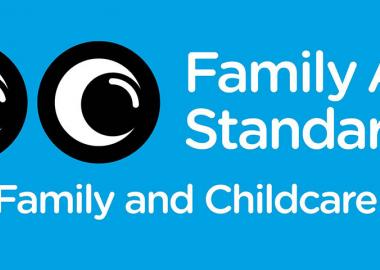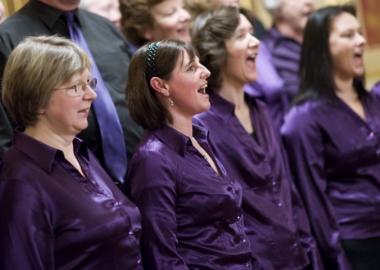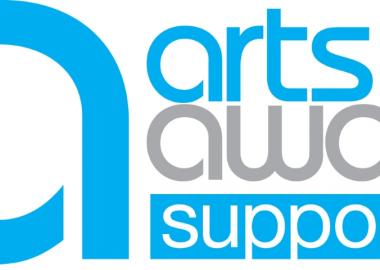Research by Age UK has confirmed what many of us have long suspected: that cultural engagement is the biggest contributing factor to wellbeing in later life. Member groups often provide just this kind of opportunity for engagement, but may not be aware of the barriers that can prevent people from getting involved.
Handily, the Family Arts Campaign has produced a new set of Age-Friendly Standards, which provide guidance for arts organisations welcoming older family members. They are designed to complement the existing Family Arts Standards which codify good practice in welcoming families, and to provide specific guidance on welcoming older people.
Why sign up to the Standards?
The self-assessment framework provides an excellent way to ensure that you are providing an engaging, accessible and welcoming environment for older audience members.
In addition, groups who sign up to the Standards can use the trusted Age-Friendly Standards logo on posters and publicity material to demonstrate their commitment to potential audiences, and can list age-friendly events on the Family Arts Campaign's listings website.
Top tips
Below are some suggestions of things to consider when incorporating the Age-Friendly Standards into the policies and practices of your group.
In some cases it may not be possible for your group to act on a particular suggestion if it is something you have no control over, such as the accessibility of your performance venue.
However, by acknowledging that the issue exists, considering carefully the impact it may have on your audience and communicating clearly to your audience that you have taken it into account, you can demonstrate your commitment to making your events as accessible and relevant as possible to people of all ages.
1. Build relationships
- Facilitate relationships between the different generations your group interacts with
- Aim to foster relationships with older people not only as audiences, but as volunteers, ambassadors, trustees and active participants in your group
- Acknowledge that older people are not a homogenous or distinct visitor segment but a diverse group with a wide range of abilities, tastes etc. Your group will respond in ways that are appropriate to individual needs, informed by individuals themselves
- Be open and willing to learn from older people and solicit their views, either formally, or informally
- Build relationships with other places and services older people may use (e.g. health and care facilities, housing providers, adult learning centres, libraries, clubs and societies and community centres)
- Consider working in partnership with other age-friendly cultural organisations and venues in the local area to help inform older people about the whole cultural offer that is available to them
2. Consider suitable programming
- Consider artistic work that has the ability to inspire, articulate & celebrate life in older age
- Avoid making assumptions about taste and recognise that with any large and diverse group comes diverse interests. Ensure that the views of older people are represented on any consultation panels or questionnaires
- Aim for intergenerational provision to be integrated into the whole programme and sustained beyond specific participation or engagement initiatives
- Think about collaboration, co-production and work that is not only for older people, but with and by older people- as programmers, facilitators and artists
- Consider timings and times of day in programming- including matinees and daytime activities. Build in extra time for getting settled, intervals and comfort breaks. Also factor-in local public transport provision and be aware that where it is unavailable at certain times (particularly at night), this may present a significant barrier, as well as potential hidden costs
3. Provide appropriate facilities
- Be clear about what needs your group can support, and those it cannot – allow people to decide whether they need to bring along a supporter or carer to assist them for your events/activities
- Consider equally the needs of companions or accompanying family members and help make their experience easier
- Be clear, not only on the facilities available, but also on the logistics of getting to a venue. Supply clear indications of transport routes, parking, paths, time needed to get from A to B to minimise any surprises. Consider ways of visualising, e.g. virtual tour/street map/visual stories
- If you are operating a venue, display accessibility accreditations (where applicable) clearly and visibly, both on-and-offline
- Consider the accessibility of every aspect of the visit to ensure the best experience possible and show awareness of hidden disabilities such as sight or hearing impairments. This could include things like:
- parking and the possibility of reserving parking bays in advance or signposting to nearby parking facilities and costs
- possibility of reserved seating for those with limited mobility
- access to and availability of toilets
- counter heights at box office/bars/cafes
- potential for obstruction of thoroughfares for wheelchairs or walking aids
- provision of large-text print materials, seat numbers, exhibitions captions and volunteer name badges
- ease of connecting to hearing loops or infrared systems
- Braille and audio recordings of information provided in print. Also consider colour contrast and design that could impact on legibility for those with some visual impairments
- Consider additional environmental factors for comfort/ease, e.g.:
- sufficient heating and lighting levels
- availability of comfortable and supportive chairs (with backs and armrests where possible) and relaxed/quiet seating areas
- possibility of advance booking café space/parking
- clear signage, maps and building navigation
- free drinking water and low-cost refreshments
4. Communicate appropriately
- Use positive and inclusive language and images in marketing communications and group booking criteria that do not restrict or perpetuate stereotypes of ‘family’ or of older people
- Communicate alternative means for ease of booking tickets and finding information for visitors who may not be online with an easy-to-find telephone number
- Provide clear channels for older people to communicate specific needs to your group in advance, with reassurance that requirements will be met
- Use alternative approaches to reach older people who may be offline
- Think creatively about new channels to reach older people, particularly the growing number who are online
- Provide logical and clear website navigation for bookings and information
- Provide clear explanations for new or unfamiliar concepts e.g. ‘touch tours’ or relaxed performances’ so visitors know exactly what to expect- using everyday language that avoids jargon and does not assume specialist knowledge about the arts
5. Provide a warm welcome
- Create a welcoming atmosphere, ensure staff are visible and remain vigilant to visitors’ needs
- Ensure that all staff are well-trained and aware of difficulties that some older visitors may encounter, including factors that can cause distress for visitors with certain conditions, such as dementia and be able to advise on use of loud noises, music or strobe lighting
- Where staff have undertaken specialist training, encourage them to display this e.g. by wearing their Dementia Friends badge
- Nominate staff members or volunteers as champions of age-awareness within your group who will provide advocacy and dedicated support
- Embed age-friendly policies and procedures into your group’s working practices
Find out more about the Age-Friendly Standards and sign up on behalf of your group.
We hope you find this Making Music resource useful. If you have any comments or suggestions about the guidance please contact us. Whilst every effort is made to ensure that the content of this guidance is accurate and up to date, Making Music do not warrant, nor accept any liability or responsibility for the completeness or accuracy of the content, or for any loss which may arise from reliance on the information contained in it.










